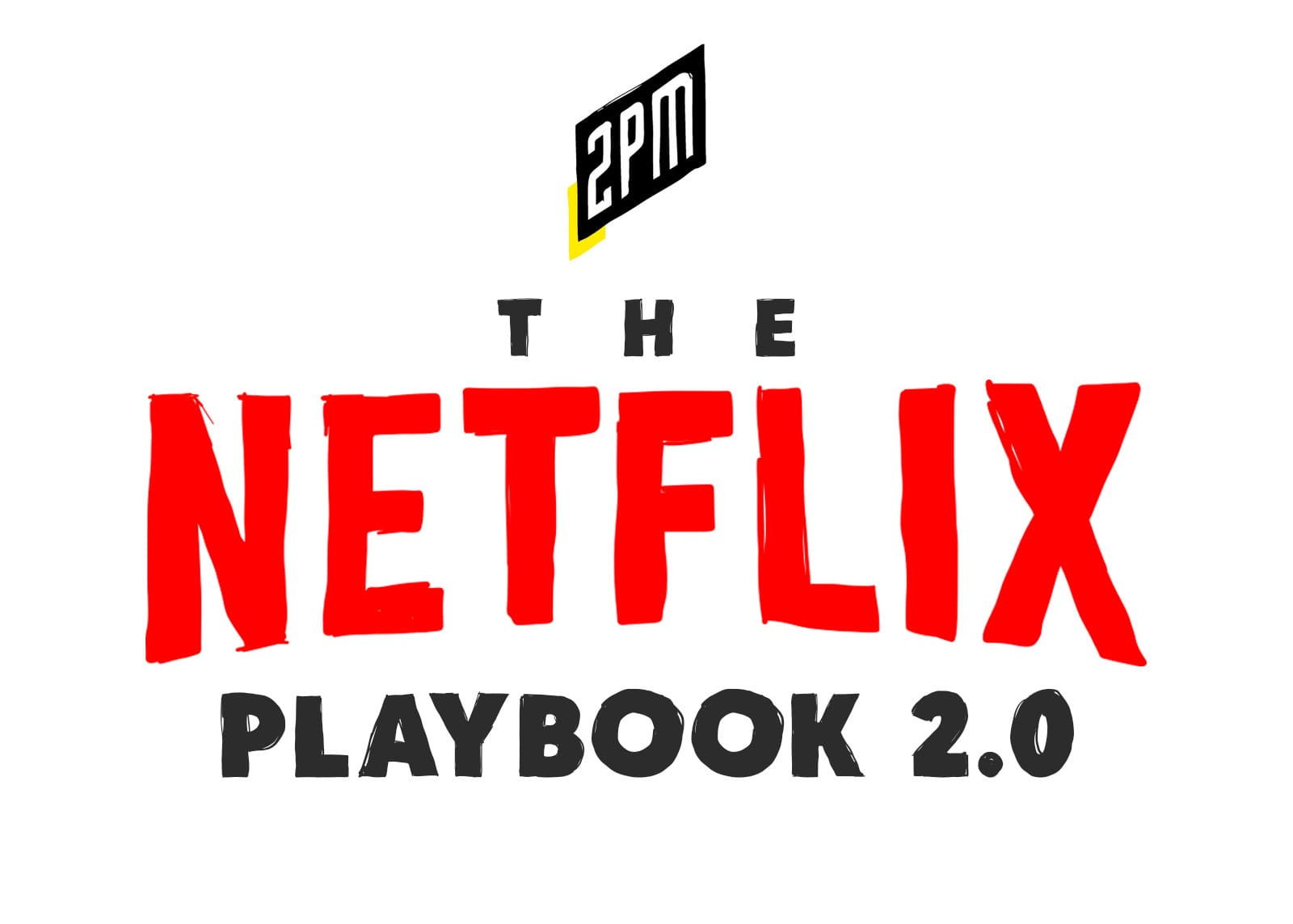
One hire can make all of the difference. For Netflix, Josh Simon’s role as VP of Consumer Products is key to the platform’s offense, defense, and long-term viability as studios become self-sustained content fortresses.
The excitement around Netflix’s eCommerce push is palpable. If this project succeeds, the implications are far greater. CEO Ted Sarandos and Netflix are resting on dormant potential. With direct-to-consumer retail success, the streaming service and film studio could compete with Disney on another front.
Disney Plus infringed on Netflix’s ground and made an immediate impact on its offering by doing so. Netflix’s Marvel, Star Wars, and Pixar catalogues are now sparse. In April 2021, the other major intellectual property factories began threatening to move their projects from Netflix. Engadget recently encapsulated the mounting competition:
The battle to gain a foothold in the streaming era has spurred Hollywood studios to go on the defensive. After licencing films and shows to Netflix and Amazon, the likes of Disney and WarnerMedia have yanked their biggest properties from the competition to boost their own platforms. Not to be left behind, Comcast-owned NBCUniversal is reportedly mulling a similar strategy in a bid to prop up its fledgling streamer, Peacock, reports Bloomberg. [1]
As Hollywood goes on the defense, Netflix has responded with a strategy that signals the beginning of a longer-term approach to competition with Disney, Amazon, WarnerMedia, and Comcast’s NBCUniversal. It begins with DTC retail.
Phase One: Original Brand Retail
Netflix’s Shopify build shouldn’t be much of a surprise. The decision to pursue a millennial-friendly style of commerce over a traditional custom build or a more robust partnership with Salesforce, BigCommerce, or Magento is telling. This is what very large companies do when they’re not entirely sure about direction: equal parts skepticism and efficiency. But the decision may play in its favor.
Even if the Shopify development required $1-3 million (it was likely much less expensive), it’s a relatively tiny investment into a nascent operation that will grow methodically over the coming weeks. Designed by BVA and developed by SDG (a partner to Skims and Prive Revaux), Netflix.shop is the streaming giant’s entrance into DTC. It’s a launch that the company hopes will communicate its brand is fresher than its age (Netflix is now 24 years old).
And aesthetically, functionally, and psychographically, the Shopify approach is consistent with Netflix’s goals. Not just from its front-end appearance and merchandising but from the technologies used: Shopify, Klaviyo, and Signifyd. In terms of product development, collaborative partners, and product photography styling, the retail platform succeeded in setting out to attract a younger, vibrant, and savvy consumer. So young that geriatric millennials may not fully grasp Netflix’s product and partnership strategies. Japan’s Beam brand, anime, and its Yasuke animated property are all indicators this approach may have greater implications. So in theory, this small investment may become Netflix’s most important.
Web Smith on Twitter: “Our daughters now have a whopping $126 worth of merchandise commemorating Season 3 of Stranger Things and outside of minimal licensing fees, Netflix earned none of that. Linear Commerce would transform Netflix’s prospects. / Twitter”
Our daughters now have a whopping $126 worth of merchandise commemorating Season 3 of Stranger Things and outside of minimal licensing fees, Netflix earned none of that. Linear Commerce would transform Netflix’s prospects.
Netflix has long known its potential in leveraging its intellectual property for merchandise sales. In July 2019, a countless number of retailers licensed Netflix’s “Stranger Things” property. For a short period, it was a retail bonanza for Target, Amazon, H&M, Kellogg’s, Burger King, Coca-Cola, Hot Topic, Walmart, and even Baskin-Robbins who converted 75 of their stores to appear like the series’ “Scoops Ahoy” ice cream shop.
The Duffers said none of the marketing deals meant to hype their show would add to their bank accounts. “We’re not getting a revenue cut from any of this,” they said. “The hope is that it just gets the show more exposure.” [2]
But throughout this era of Netflix, the only potential transactions were in-show product placement and the potential of heightened subscription interest.
Phase Two: Live Events and Activations
In March 2020, I calculated the math on Netflix’s eCommerce potential as the streaming studio’s hire of Josh Simon tipped off the current direction.
Web Smith on Twitter: “In July, I did some basic estimates on Netflix’s online retail / licensing potential. “Just 7% of Netflix’s viewers purchasing through the app – at a $50 AOV – would equate to over $140M in sales from 41 million households.”@Netflix is moving towards linear commerce. pic.twitter.com/P2DpTe0dlq / Twitter”
In July, I did some basic estimates on Netflix’s online retail / licensing potential. “Just 7% of Netflix’s viewers purchasing through the app – at a $50 AOV – would equate to over $140M in sales from 41 million households.”@Netflix is moving towards linear commerce. pic.twitter.com/P2DpTe0dlq
Simon’s hire is as directional as it is functional. Earlier in the new VP of Consumer Product’s career, he spent time working at Nike. But it was his six years working for Walt Disney Studios and Blumhouse’s live experience business that will shape Netflix’s brand and audience strategy for consumer products. He’s tasked with “identifying and building plans across different lines of business in consumer products” according to a 2020 article by Variety [3].
And this is why the Shopify experiment has long-term implications. If Netflix can prove that it can successfully capture more of its commercial upside by insourcing more of its retail, more live events will follow. Later in 2020, “Stranger Things” rode the success of the Baskin-Robbins partnership by launching an interactive drive-thru experience in Los Angeles. Spanning 400,000 square feet at Skylight Row in Downtown Los Angeles, the hour-long performance featured scenes from 1985 Hawkins. The guests were encouraged to dress in their finest 1980s wears as they were transported back 35 years to a high school reunion, the fictional “Starcourt Mall”, and then to a three-part show featuring the three seasons’ key moments. The live event was co-produced by Netflix and Fever, a venture-backed event platform. This is inline with Adweek’s contention that the streaming giant will continue finding innovative ways to capitalize on its intellectual property:
Netflix’s eCommerce push caps off years of dabbling in the consumer products business that Netflix has been pursuing through retail and brand partnerships as it has looked to find ways to capitalize on the runaway success of some of its original series. [4]
Netflix’s Shopify strategy is the precursor to a focused effort to bolster the viability of its class of properties that may eventually take on life as temporary live events. But this isn’t where Netflix’s aspirations need to end.
Phase Three: The Netflix Universe
With Josh Simon’s charge to capitalize on the runaway success of some of its original series, Netflix’s strategy is unlikely to complete with temporary live events and short-term activations. Netflix has amusement park potential and its decision to pursue commerce as an initial step is a credible attempt to capture the data required to build a strategy around a physical location for young adults. That includes members of Generation Z, Netflix’s core demographic, as it attempts to compete with video game studios, amusement parks, and film production houses with their own streaming services. Consider Netflix’s biggest competition:
Netflix said in 2019 that its biggest competition is actually Fortnite, which is what more likely pulls players away from the streaming service. [5]
Netflix’s digital world may converge on the physical for good. In doing so, Netflix will finally go on the offensive after nearly a decade of Hollywood’s traditional studios breaking down one of its two prized advantage: its content curated from other studios. The result may be a Netflix that goes all-in on becoming more like Disney or Universal in the process:
As Netflix tries to compete with Disney on a global scale, it is trying to create franchises that can have the same impact on culture as “Star Wars” or “Toy Story.” [6]
It is unlikely that Netflix will ever find it suitable to acquire 25,000 acres of land like Disney before it, or even 415 acres like Universal Studios. But in nearly every metropolitan region in America, there is a dying mall – one that bustled in the era depicted by the “Stranger Things” fictional Starcourt Mall. There will be inexpensive property at CEO Ted Sarandos’ disposal and it wouldn’t be the first time that Netflix converted a dead mall into something useful.
If the streaming giant proves that IP-fueled merch can sell, so might brick and mortar retail, pop-up experiences, and amusements. Don’t be surprised if Netflix’s digital experiments precede its venture into physical retail, events, and a permanent home for its beloved original properties. It’s created franchises that are valuable. Walt Disney knew what he was doing when constructing a Bay Lake, Florida home for his franchises. In this day and age, what begins as DTC often ends up in physical formats. It’s what takes a valuable property and makes it a beloved one. A lasting cultural impact may follow.
By Web Smith | Art: Alex Remy | Editor: Hilary Milnes
